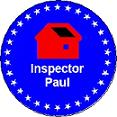|
What is the ERMI©?
- The
ERMI© is an acronym for EPA
Relative Moldiness Index.
- It was developed by scientists at the USEPA to provide
a straightforward, objective, and standardized way to obtain results for indoor air quality investigations.
- The EPA is developing
an ERMI ranking system based on dust samples collected from homes across the United States.
- The ERMI will help
predict the moldiness of homes. Homes with high ERMI values have a greater chance of having a mold problem then homes with
a low ERMI.
- 36 different fungi
make up the ERMI and are designated as Group I (those found in atypical, water damaged homes) and Group II (those commonly
found in all homes):
Group I
Stachybotrys chartarum, Chaetomium globosum, Cladosporium sphaerospermum, Aspergillus versicolor, Eurotium
(A.) amstalodami, Penicillium variabile, Aspergillus flavus, Aspergillus restrictus,
Penicillium crustosum, Aspergillus niger, Aspergillus sclerotiorum, Penicillium purpurogenum, Aspergillus fumigatus, Penicillium
corylophilum, Aureobasidium pullulans, Aspergillus ochraceus, Penicillium brevicompactum, Paecilomyces variotii, Aspergillus sydowii, Penicillium spinulosum, Wallemia sebi,
Aspergillus unguis, Scopulariopsis
brevicaulis, Scopulariopsis chartarum, Aspergillus penicillioides,
Trichoderma viride
Group II
Acremonium strictum, Alternaria alternata, Aspergillus ustus, Cladosporium cladosporioides
v1, Cladosporium cladosporioides v2, Cladosporium herbarum, Epicoccum
nigrum, Mucor & Rhizopus group, Penicillium chrysogenum, Rhizopus stolonifer
What is MSQPCR?
·
MSQPCR is an acronym for Mold Specific Quantitative Polymerase
Chain Reaction.
·
The
ERMI value is determined using the MSQPCR method in the lab.
·
It
was developed by scientists at the USEPA to detect and quantify fungi associated with indoor air quality problems.
·
It’s
a FAST, ACCURATE, and SENSITIVE DNA-based analytical method for identifying and
quantifying molds to the species level.
·
The
method looks for the presence of DNA sequences that are unique to a particular mold species.
Comparison of MSQPCR analysis to spore trap and culture analysis.
|
|
Spore Traps |
Cultures |
MSQPCR |
|
Speed |
Results available in 24 hrs or sooner. |
6-10 days |
Results available in 24 hrs or sooner. |
|
Identification |
Genus level of all identifiable mold spores (no ID of hyphae) |
Genus and/or species level of viable spore-producing molds (no ID of hyphae) |
Genus and species level of client selected molds |
|
Quantification |
Spores |
Colony Forming Units |
Cells* |
|
Accuracy |
GOOD |
BETTER |
BEST |
|
Viability |
Cannot be determined |
Can be determined |
Cannot be determined |
|
Sampling Time |
Limited due to possibility of overloading sample |
Limited due to possibility of overloading sample |
No restrictions |
|

